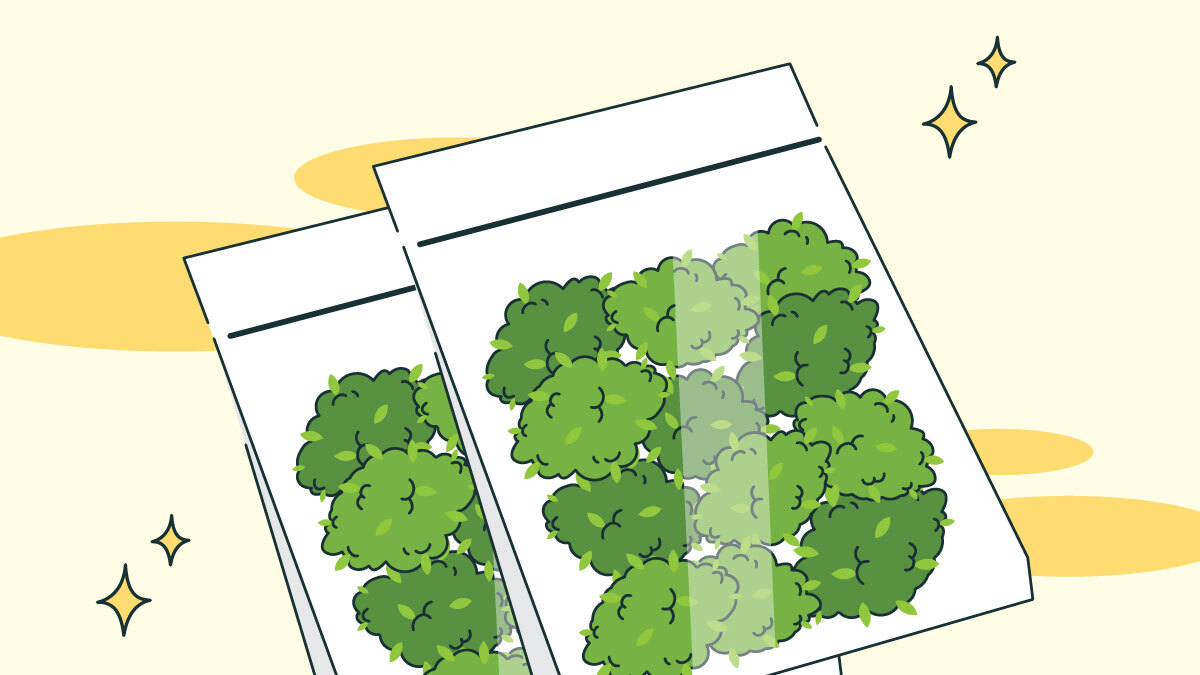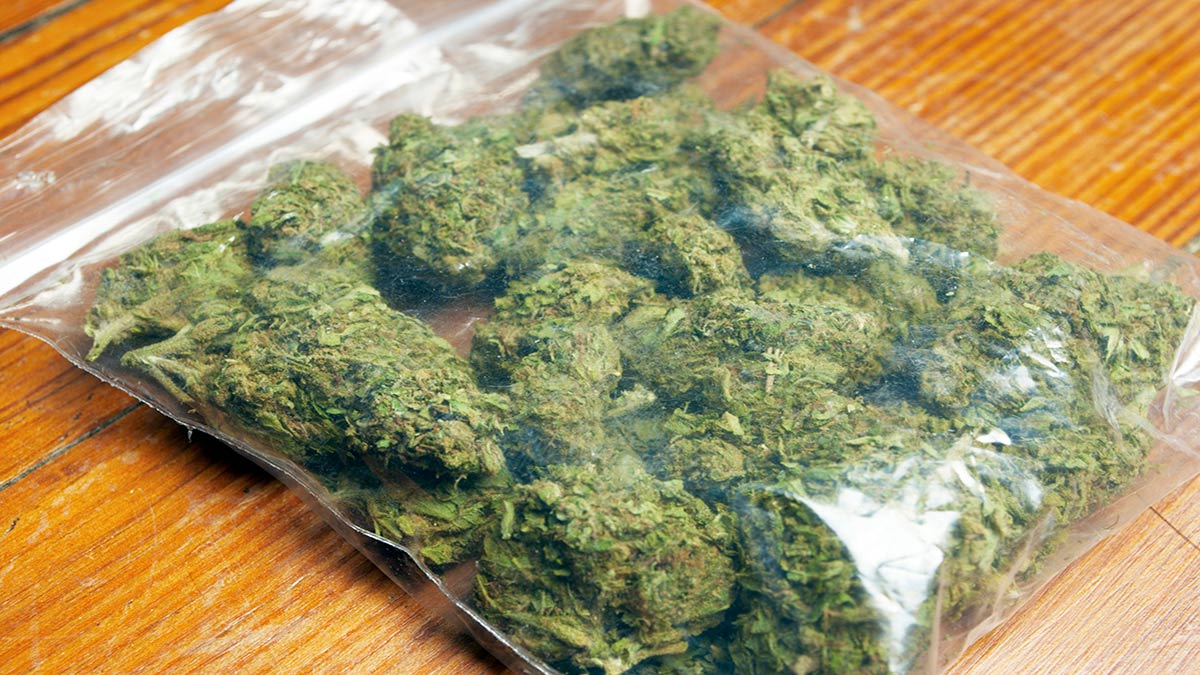Marijuana Storage: How To Bag Up Weed And Keep Them Fresh?

Visit a local Sam’s Club or Costco, and you’ll see dozens of people wheeling huge shopping carts (or palettes) loaded with groceries to their cars. A few may have enormous families, or they’re preparing for a big holiday dinner. But most are buying in bulk in order to freeze the food for use over the next few months.
It’s a smart thing to do. You save money on your meat or poultry, and you don’t have to go shopping again for a while. And everyone knows what to do with the meat – they do the same thing their parents did. They simply bag it up properly and throw it into the freezer (or the deep freeze, if they have one).
Buying large amounts of weed is just as smart. You’ll get a better price when you buy by the ounce (or the QP, or even more). And your stash should last longer than a few days or a week.
There’s just one problem: you probably never watched your parents store huge amounts of flowers, so you never learned the best way to do it when you were growing up. That means you’re likely to put your buds into baggies and hide them away somewhere safe.
Oops.
Most of us have bought cannabis that’s been packaged in a baggie. As it turns out, that’s not how to bag up weed – if you want it to stay fresh and potent for the long term.
Crucial Factors To Consider When Storing Weed
After marijuana is harvested, it must be properly dried and cured right away. That can take more than a month, but those are very important steps. There’s a huge amount of water trapped in the plants, and moisture levels are weed’s #1 enemy once the growing process is complete. Drying will remove most of the water. Curing allows much of what remains to evaporate, without damaging the flower.
Too much moisture? Mold and mildew will almost certainly start to grow on the buds. Not enough moisture? The weed will lose potency, along with the terpenes that provide its flavor and aroma. It may even become so brittle that it’s virtually unusable.
Reputable growers will dry and cure their product to ensure it has the proper moisture content when you buy it. That’s usually somewhere between 8% and 12%. (If you’re growing your own, don’t skip those preliminary steps. They’re time-consuming, but crucial.)
But moisture can easily seep back into the weed after drying and curing, depending on where and how it’s stored. The biggest potential culprit is humidity, but high temperatures can also encourage water to accumulate on the buds.
What’s called “water activity” is so important, in fact, that the American Society for Testing and Materials has set guidelines for the storage of cannabis. In short, relative humidity should be kept below 65% and ideally above 60%. If it goes above 65% mold can grow; if it goes below 60% the weed will start to dry out. Temperatures should be 70° or below (but always above 32°); warmer air will lead to more humidity, and air that’s too cold will affect potency.
Other factors matter, too. One is air circulation, because too much oxygen causes cannabis to degrade quickly, and not enough air will cause an increase in humidity. Another concern is light. Not only does it boost ambient temperatures, but ultraviolet rays break down plant material – including the cannabinoids in the pot.
We now know what’s necessary to preserve your stash.
The Wrong Ways To Bag Up Weed
Let’s first talk about the mistakes people often make, before describing the right way to store weed.
Wrong: Baggies
Even though “bag” is the root of the word “baggie” – and even though cannabis has been sold in baggies for decades – it’s a bad idea to use sandwich bags to bag up your weed.
Most baggies aren’t air-tight, even if they have a zip-loc top. If you have some bud in a plastic bag right now, do a quick test: put the bag up to your nose and sniff. Smell the pot? That’s because air is still moving in-and-out of the baggie. As we’ve discussed, too much air circulation will damage your stash. It will also mean that some of your weed’s “essence” is escaping. And if the baggie is full, that will quickly boost the humidity inside.
These time-honored sandwich bags are also made of clear plastic. They freely allow light and UV rays to damage the flower that’s inside. There’s one other issue as well; plastic bags can create static charges, which may fry the bud’s trichomes.
Someone’s told you to put orange peel into the baggie to control moisture levels? Not a great idea. That can induce the growth of mold while changing the pot’s flavor.
If you’ve bought the product and it came in a baggie, move it into a better container as soon as you get it home.
Wrong: In The Fridge
It’s natural to think that putting weed in the fridge will keep it fresh. There’s a big problem with refrigerators, though: they aren’t carefully temperature-controlled.
When the temperature gets too high inside, the machine sends more cold air into the refrigerator to cool it back down. That cold air usually comes from the freezer, meaning whatever is in the fridge gets hit with a blast of freezing air that will degrade your bud. And the fluctuating temperatures may cause mold and mildew growth.
Wrong: In A Humidor
Humidors are ideal for storing cigars; they keep humidity high and provide wood oil that enhances tobacco’s taste. That’s exactly what you don’t want to do for weed; the humidity will cause mold to grow, and the wood oil can damage marijuana.
How To Bag Up Weed

There are bags you can use to store weed, but they’re not sandwich bags.
Bags made from a material called Mylar are used to store products like coffee beans (they also make helium balloons from it), and these bags work fairly well for cannabis. They’re quite strong and their seal is virtually air-tight, making them a better choice than baggies. Additionally, they don’t contain toxins (some plastics do), and you can purchase opaque Mylar bags that shut out the light.
The best way to bag up weed, though, doesn’t involve bags at all.
You’ve certainly heard the term “stash jar,” which gives you a pretty good clue about what you should use. A glass jar is the best choice for storing flowers because screwing the lid on tightly will make it air-tight, glass won’t affect the taste or flavor of the weed, and it doesn’t release static charges.
There’s only one problem: most glass jars are clear, allowing light to reach their contents. If you can find an opaque glass jar, that’s ideal. Otherwise, you’ll need to wrap the jar in a dark towel or store it in a dark place.
Other tips that will help with optimal weed storage:
- Gently wrap the bud in a paper towel or parchment paper before you put it into your stash jar. That will help control moisture.
- For long-term storage, place a humidity pack (Boveda packs are a good choice) in the jar. It makes sure relative humidity doesn’t get too high or too low.
- Don’t pack the jars too tightly. Cannabis needs air to be able to flow inside the jar.
It may be difficult for old-timers to give up their baggies – but many dispensaries and even dealers have switched to a smarter way to bag up their weed. It simply makes sense.
How To Bag Up Weed FAQ
Q: If weed is packaged in a baggie, should I avoid buying it?
A: Not at all, unless it’s been sitting in the bag for a long time. Chances are that it was only packed that way shortly before being sold; just move it to a better storage container when you get it home.
Q: What about wrapping it in aluminum foil?
A: It can be a decent solution if you haven’t finished a dime bag and want to save the rest for the weekend. Just wrap carefully, put it somewhere where it won’t get jostled, and don’t keep wrapping and unwrapping it, because it’s easy for foil to knock off the trichomes and damage the weed.
Q: Do I have to “burp” the stash jar?
A: Regular “burping,” which means briefly removing the lid to allow air to enter and leave the jar, is important when you’re curing weed. When you’re storing bud, it’s not as important. Burp the jar once or twice a month, and you should be all set.